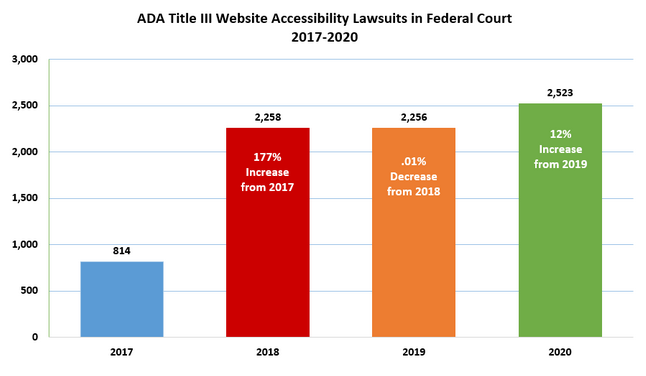Summary

Any company thinking about acquiring another company (the target) will not jump into a deal without doing a thorough analysis. While two companies may look compatible on paper, often the market perception of the target will not live up to the sales hype. That’s why due diligence is an essential component of the mergers and acquisitions (M&A) process.
Large organizations undergoing the M&A process often hire a company like Tech DNA that specializes in due diligence. Tech DNA’s mission is to provide comprehensive, confidential, and unbiased analysis of technology risk factors in software and hardware, including specialized areas such as machine learning and artificial intelligence.
They evaluate and determine whether a target company’s technology lives up to its claims by analyzing security, privacy, scalability, and the proper usage of open-source software. Tech DNA also identifies the strengths and weaknesses of a company’s technology team, technology debt, and business processes. The end result is delivering information that business decision-makers need to achieve successful acquisition outcomes.
“It is critically important to quickly understand the specifics of a target’s implementation and translate that into a risk profile for our clients that is both understandable and actionable,” says Russell Johnson, Tech DNA President.
Tech DNA brings Equal Entry into the project to deliver a prioritized set of accessibility issues and proposed remediations. This mitigates risk in the short term and helps companies implement systemic change to improve accessibility into the future.
Legal Risks and Brand Exposure
The main goal of due diligence in M&A is to calculate the target acquisition’s risk to the company purchasing them. The lack of accessibility carries material risks that translate to damages in court and in brand perception.
Many target companies in the United States are required to comply with a variety of laws. Failing to comply, can introduce the risk of a lawsuit or lack of procurement by a government organization.
Here are some of the laws that may apply to U.S.-based organizations:
- Section 508 of the Rehabilitation Act (508): Requires federal agencies to build, buy, maintain, and use information and communications technology (ICT) that is accessible for people with disabilities.
- 21st Century Communications and Video Accessibility Act (CVAA): Updates federal communications law to expand the access to modern communications for people with disabilities.
- Americans with Disabilities Act (ADA): Civil rights law that prohibits discrimination based on disability.
The recent explosion of lawsuits and judicial decisions has shown that technology must be available and usable to people with disabilities. Even if the target company does not need to comply with these laws, it can still damage the buyer’s brand if its product or service is inaccessible. If a customer with a disability runs into a barrier in using technology, that person may complain on social media, to their personal network, or elsewhere.

Accessibility supporters who catch wind of it will spread the word and mention the brand by name. This can potentially harm the company’s brand and form a negative impression on the public.
We’re sorry about testing voice Tweets without support for people who are visually impaired, deaf, or hard of hearing. It was a miss to introduce this experiment without this support.
Accessibility should not be an afterthought. (1/3) https://t.co/9GRWaHU6fR
— Twitter Support (@TwitterSupport) June 19, 2020
Reference: Wall Street Journal Twitter’s Voice Tweets Upset Users Again About Accessibility
When a target fails to comply with accessibility laws, the costs related to the acquisition will soar. The risk transfers to the buyer who is the larger company and will need to take many necessary steps to make the technology accessible. No one wants to be surprised with a sizable cost.
Recently, more companies have made a commitment to provide accessible products for everyone. It’s part of their corporate ethos. And they want to know the target company’s accessibility standing.
About Tech DNA and Equal Entry Partnership
Through a partnership with Equal Entry, Tech DNA’s due diligence process includes evaluating the target company’s accessibility efforts. Together, they have completed more than 75 projects in the M&A process. Equal Entry has refined its processes and built an intelligent workflow through learning from Tech DNA’s rigorous and effective process. Now they have a repeatable process for accessibility as part of the risk analysis in M&A.
The two companies have conducted risk analyses of various technologies spanning a variety of platforms and technology including Linux, macOS, Windows, iOS, Android, video games, and virtual reality. Tech DNA communicates the outcomes from Equal Entry’s accessibility risk analysis to the business decision-makers. M&A requires delivering an accurate risk profile in a short timeline.
One of the biggest findings is that M&A events are a great opportunity to focus on accessibility. All parties are paying attention and willing to do what they can to identify risks and close them in a timely manner. Equal Entry has seen companies fix 50 to 100 accessibility issues in the span of two weeks when they are motivated to complete their acquisition. This contrasts widely with our typical client who can often take 6 to 12 months to complete a similar amount of remediation.
“Our projects are done under the extreme time pressure of an M&A transaction. While each transaction is unique, it is critical that we follow repeatable patterns to enable us to learn quickly and surface business-impactful risk assessments for our clients,” says Johnson. “Some projects begin with 24-hour notice with findings due within two weeks. Equal Entry has this figured out for accessibility and is able to quickly identify critical accessibility scenarios, test them against relevant standards — both regulatory and client-provided — and provide a remediation plan within project deadlines.”
Repeatable Accessibility Auditing Process
As a general process, we work to identify how many technology platforms exist for target acquisition and prepare a list of scenarios or priority user tasks that must be completed on the technology. Our two companies prioritize and concentrate on risks in core areas to create actionable tasks. We identify key scenarios to help quantify the risk and plan for remediation.
It turns out that the process compels many targets to have a greater appreciation for accessibility. It also helps illustrate that many issues that affect people with disabilities are simple fixes that take very little development time to address when properly motivated.
In one of our most complex projects, we needed to ensure that a single product was accessible and worked correctly for a set of core user tasks across Linux, macOS, Windows, Web, iOS, and Android devices. In other situations, we may only need to work on a single platform such as the Web but ensure that it works successfully across a suite of five to ten products.
Equal Entry conducts the accessibility audit and sits down with Tech DNA to go over the results. The companies work to prioritize the remediation plan based on the level of risk and the difficulty of the fixes. They identify a set of blocking issues that comprise the most severe violations. These are the issues a company looking to purchase should know about first and the target should focus on first. Blocking issues prevent a user with a disability from finding or using specific features, or successfully completing important tasks.
Speeding up Accessibility Remediation
After identifying any accessibility issues, the buyer may require the target company to remediate them prior to sealing the deal. This helps reduce the risk of a new acquisition that has done little or nothing for accessibility.
If the buyer waits until after closing to address the issues, then remediation could become a bigger battle as the target won’t have the motivation to fix it or complete the work within a reasonable timeframe. This also means the legal risk increases because now the target has a set of identified accessibility issues, but no actionable remediation plan to address them.
One approach the companies may take is to set remediation priorities. They agree to first reduce and eliminate risk by fixing accessibility issues that are demonstrably blocking a person with a disability from completing a task. After they’ve fixed a core set of issues, they can do full remediation by addressing systemic issues during the development process. Accessibility is not a one-and-done project. It’s a continuous part of the entire development cycle.
As the accessibility audit reveals problems, each will receive a level of difficulty rating. Problems can be rated as easy, medium, or hard to fix. Easy is defined as single line code fixes or documenting an alternate method for successfully completing a task.
An example of a medium fix is tweaking color contrasts that require a broad review of themes and templates across a product. And finally, the hardest fixes consist of things like implementing full accessibility support for a custom control, such as a data visualization or a date time picker.
Common Accessibility Issues in Due Diligence
In doing the accessibility audits for M&A, a few common themes have appeared. One is that many of the target companies tend to be startups and less mature organizations. Because of this, they tend to have little to no consideration for accessibility.
If anything, the company has it on its wish list or roadmap. But they’re not proactively ensuring their digital products are accessible.
The most common problems target companies have with regard to accessibility are the following:
- Color contrast violations: They make design decisions based on the cool factor. This doesn’t mean a palette that passes color contrast tests can’t be cool. The design lacks thoughtful consideration
- Lack of keyboard support: One of the biggest problems is keyboard trap. This is when someone using the keyboard gets stuck in an input box or other element that prevents the keyboard from getting out of it.
- Differences in platform support: Many mobile device software companies tend to release software for iOS and Android. Findings consistently show that the iOS implementation is generally more accessible in many areas except keyboard accessibility, which typically works better on Android.
Limited or no testing process: Targets often don’t have test plans or test environments. This puts the product at risk for rapid evaluation of serious accessibility problems. It also hinders the ability to verify that fixes in the production environment have been successfully completed.
How M&A Can Advance Accessibility
The M&A process affords a great opportunity to insert accessibility auditing and remediation. The targets that are potentially being acquired are highly motivated. What we have seen through countless acquisitions is that when a company puts a focus on accessibility, they realize they can achieve significant change to make products accessible in a matter of weeks.
Accessibility must be a consideration in every company’s M&A process. The motivation that targets have to be acquired, means that buyers that are committed to an inclusive world can push change on an accelerated scale. We believe that the more the big players use accessibility as part of the M&A process, the more rapid change we will see in the accessibility of products in the world.